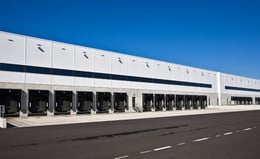How S&OE Reduces Risk in the Automotive Supply Chain
Nick Ostdick - March 07, 2017

 Risk.
Risk.
If there’s one word that strikes fear into the minds of supply chain planners and managers, it’s risk. Today’s global automotive supply chain is a complex, variant-rich network of manufacturers, suppliers, and other partners. This results in a volatile landscape where any number of variables across each touch point of the value chain can significantly reduce the supply stream’s ability to effectively move goods from the production floor to the customer’s front door. Whether discussing sales and procurement, demand planning, production program allocation and scheduling, or transportation management, risk for disruption or breakdowns are a very real element companies must address and work to combat.
While still something of a new concept in global supply chain management, S&OE (sales and operations execution) provides companies the ability to cut through supply stream complexity and significantly reduce the risks associated in working with so many partners on a global stage. Because so much of S&OE’s value proposition stems from its ability to glimpse into the immediate supply situation, planners and managers can use this elevated visibility to make more informed decisions for mid and long-term planning.
With all this in mind, let’s first discuss the core principles of S&OE and then we’ll examine how S&OE can reduce risk in the automotive supply chain.
Defining S&OE against risk
Coined in the last few years by supply chain industry publication Gartner, S&OE acts as a demand planning supplement or safety net to detect the possibility of bottlenecks or breakdowns in larger-scale planning platforms. This in turn allows planners and managers to create and deploy solutions to these disruptions to enhance each touchpoint of a company’s overall value chain. Because S&OE allows for close inspection of weekly supply chain planning practices, companies can leverage this spot-check as a key indicator as to the viability of S&OP or annual planning. S&OE functions as a quick, short-term snapshot of the overall supply chain situation for planners and managers to make vital course corrections on a weekly basis to better create long-term strategies.
In addition, whereas S&OP and annual planning often deal in forecasting, simulations, and other hypothetical supply and production scenarios, S&OE tracks actual demand and production metrics in real-time for a more accurate picture of the demand and production stages.
Now, what does this have to do with risk in the automotive supply chain?
Risk is not just the potential for production bottlenecks or breakdowns. Rather, risk can be defined at each touch point of the value chain: inaccurate sales forecasts resulting in insufficient inventory levels; job allocation of scheduling errors based on outdated reporting or analytics; or inefficient transportation management due to poor route monitoring or load strategies. Each of these scenarios poses significant risks for companies in successfully filling customer orders and meeting delivery windows.
By monitoring actual demand and production data via real line items and data, S&OE provides planners and managers an early warning system that helps ensure smooth production cycles in the mid and long-term. This also allows planners and managers to avoid costly bottlenecks or production breakdowns in the mid-range future by combatting issues today that could snowball tomorrow and beyond, but it also works to safeguard strategies in earlier and later stages of supply chain management.
S&OE as a risk reducer
Now that we understand how S&OE functions as a safety check in terms of demand planning and production cycles, we can examine the benefits for automotive manufacturers in leveraging S&OE strategy as a core driver in reducing risk across the value chain. As we mentioned earlier, the automotive supply chain is full of inherent risks given the sheer number of partner networks. S&OE allows companies to reduce this risk by:
Encouraging optimized responses to supply chain volatility. For planners and managers, supply chain agility is a top concern when evaluating overall supply chain management. Micro-agility, or the ability to respond to sudden disruptions on a daily basis, has recently emerged as a pressing issue in leveraging effective, lean supply chain principles. Late shipments, forecast errors, and other small-scale disruptions can be mitigated via S&OE through improved scheduling and delivery reliability, reduction in raw materials overages or shortages, or fewer instances of rescheduled or reallocated production programs to meet customer demands.
Increasing visibility across the supply chain. Because S&OE provides a window into the weekly supply chain situation, planners and managers can essentially work backwards or forwards in the demand planning process to increase visibility across the supply stream on a number of levels, be it daily, weekly, monthly, or even yearly. This structure elevates the supply chain and makes it easy for individuals across the value chain to expose weaknesses or inefficiencies at any stage of the process, which in turn makes supply chain streamlining and optimization a much easier and effective end result to achieve.
Providing a space for advanced analytics. Because advanced analytics operate primarily in real-time and provide planners and managers with an immediate window into supply and production cycles, S&OE functions in perfect harmony with advanced analytics in giving OEMs an outlet for massive amounts of real-time data and metrics. Essentially, advanced analytics is the gasoline for short-term planning and modifications to production programs while S&OE is the car that requires the fuel.
LATEST POSTS
- Understand Circular Economy in The Manufacturing Industry
- How Can Industry 4.0 IT Integration Be Achieved Smoothly?
- The Significance of Order Sequencing in Discrete Manufacturing
- How to improve your Supply Chain Management: The Power of Control Towers
- Optimizing Human Resource Scheduling in Manufacturing: A Technological Approach



